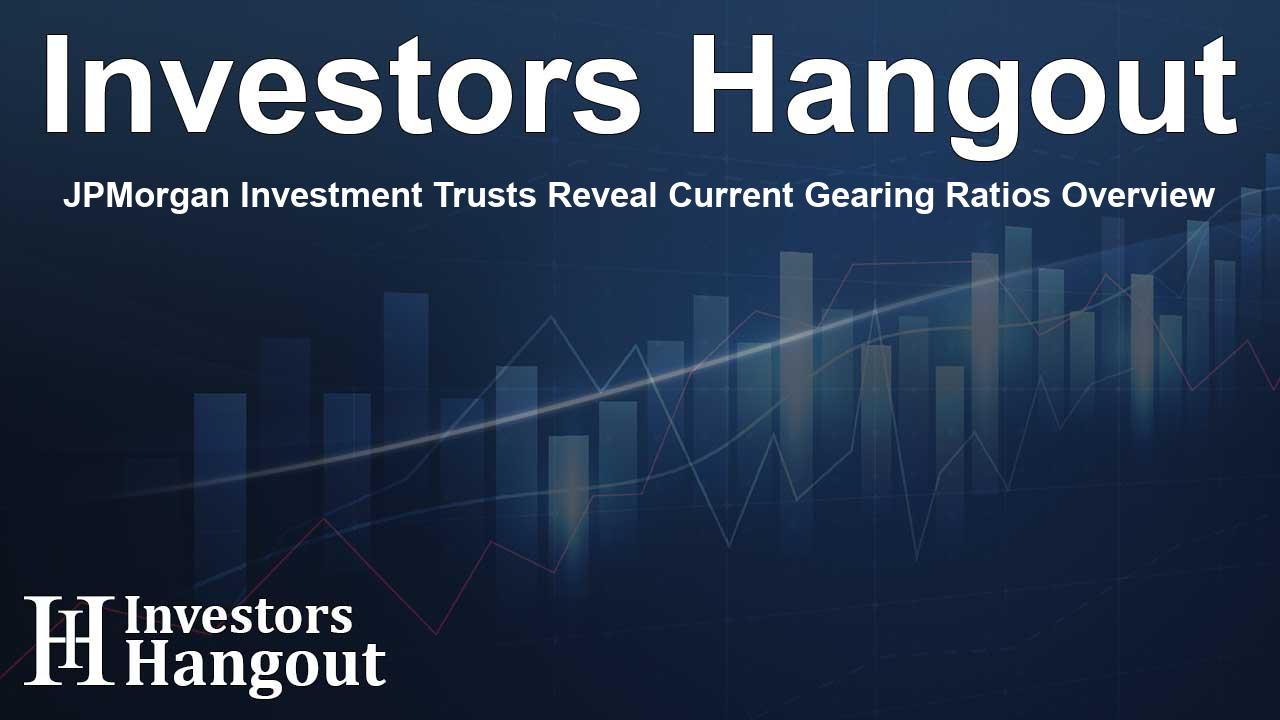JPMorgan Investment Trusts Reveal Current Gearing Ratios Overview

Understanding JPMorgan's Latest Gearing Ratios
JPMorgan's investment trusts have recently shared their indicative gearing ratios, which serve as a reflection of how these trusts manage their leverage. As of the latest report, investors can gain insights into the borrowing versus net asset value dynamics of these trusts, shedding light on their financial health and risk appetites.
What are Gearing Ratios?
The gearing ratio is an essential financial metric that indicates a company's financial leverage. It provides a measure of the extent to which a trust's operations are funded by debt as opposed to equity. Understanding these ratios helps investors gauge the level of risk associated with their investments.
Key Insights from JPMorgan's Report
Among the most notable trusts, JPMorgan Japanese Investment Trust PLC recorded a gearing ratio of 14.1%. This higher figure suggests a more aggressive approach to leveraging financial resources. On the other end of the spectrum, JPMorgan Global Growth & Income PLC reported a significantly lower gearing ratio of 0.4%, indicating a highly conservative borrowing stance.
Comparative Analysis of Trusts
Mercantile Investment Trust PLC also made headlines with a notable gear ratio of 14.8%, highlighting its own leverage strategy. It's interesting to note that some of these trusts reported negative gearing ratios. For instance, JPMorgan Asia Growth & Income PLC and JPMorgan Emerging Markets Investment Trust PLC disclosed negative ratios of -0.2% and -0.8%, respectively, reflecting an approach where cash reserves outstrip debts.
The Implications of Gearing Ratios
For investors, these ratios are not just numbers; they provide a narrative of the trust's financial structure. Higher gearing ratios can amplify returns, but they also elevate the risk of potential losses. Contrastingly, negative gearing ratios often signal a cautious financial strategy, appealing to risk-averse investors.
More Gearing Ratios to Note
The latest report also highlighted other gearing ratios, offering a broader perspective on the trusts' financial landscapes. The following ratios were reported: JPMorgan American Investment Trust PLC at 2.7%, JPMorgan China Growth & Income PLC at 4.4%, JPMorgan Claverhouse Investment Trust PLC at 7.8%, and JPMorgan European Growth & Income PLC at 5.3%. Other notable mentions include JPMorgan European Discovery Trust PLC at 4.9%, JPMorgan Global Emerging Markets Income Trust PLC at 6.6%, JPMorgan Indian Investment Trust PLC at -0.4%, JPMorgan UK Small Cap Growth & Income PLC at 10.4%, and JPMorgan US Smaller Companies Investment Trust PLC at 4.1%.
Conclusion on Gearing Ratios and Investment Strategies
Overall, the latest gearing ratio figures from JPMorgan's investment trusts provide invaluable insights for potential investors. These ratios serve as a critical tool for assessing each trust's risk profile and investment strategy. Market conditions can affect the effectiveness of these strategies, particularly in volatile environments, making it essential for investors to stay informed.
Frequently Asked Questions
What is a gearing ratio?
A gearing ratio measures the financial leverage of a trust, showing the proportion of debt used to finance operations relative to shareholder equity.
Why are gearing ratios important for investors?
Gearing ratios help investors evaluate the risk level of their investments, indicating how much of a trust’s operations are funded by debt versus equity.
What does a high gearing ratio signify?
A high gearing ratio suggests that a trust is employing significant leverage, which could enhance returns but also increase risk exposure.
What does a negative gearing ratio mean?
A negative gearing ratio is an indication that a trust's cash and equivalents exceed its debts, reflecting a conservative borrowing strategy.
How should investors interpret these ratios?
Investors should contextualize gearing ratios within the trust’s overall investment strategy and prevailing market conditions to make informed decisions.
About The Author
Contact Owen Jenkins privately here. Or send an email with ATTN: Owen Jenkins as the subject to contact@investorshangout.com.
About Investors Hangout
Investors Hangout is a leading online stock forum for financial discussion and learning, offering a wide range of free tools and resources. It draws in traders of all levels, who exchange market knowledge, investigate trading tactics, and keep an eye on industry developments in real time. Featuring financial articles, stock message boards, quotes, charts, company profiles, and live news updates. Through cooperative learning and a wealth of informational resources, it helps users from novices creating their first portfolios to experts honing their techniques. Join Investors Hangout today: https://investorshangout.com/
The content of this article is based on factual, publicly available information and does not represent legal, financial, or investment advice. Investors Hangout does not offer financial advice, and the author is not a licensed financial advisor. Consult a qualified advisor before making any financial or investment decisions based on this article. This article should not be considered advice to purchase, sell, or hold any securities or other investments. If any of the material provided here is inaccurate, please contact us for corrections.
